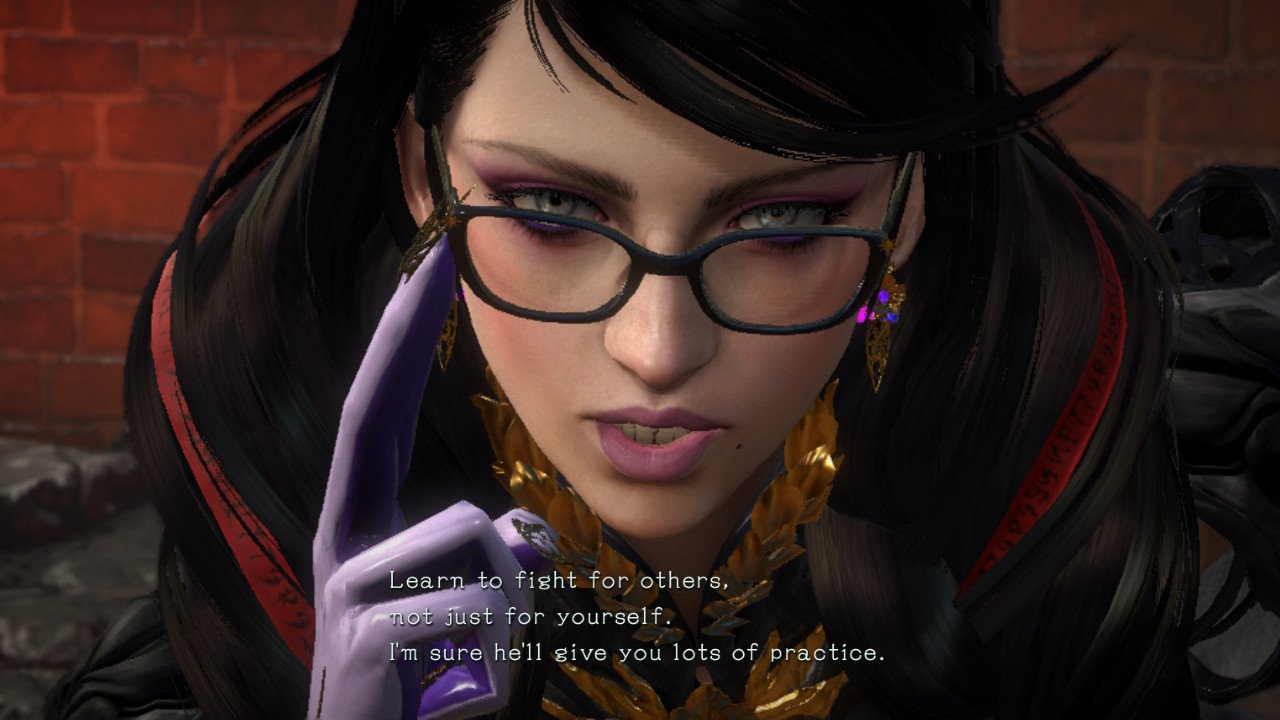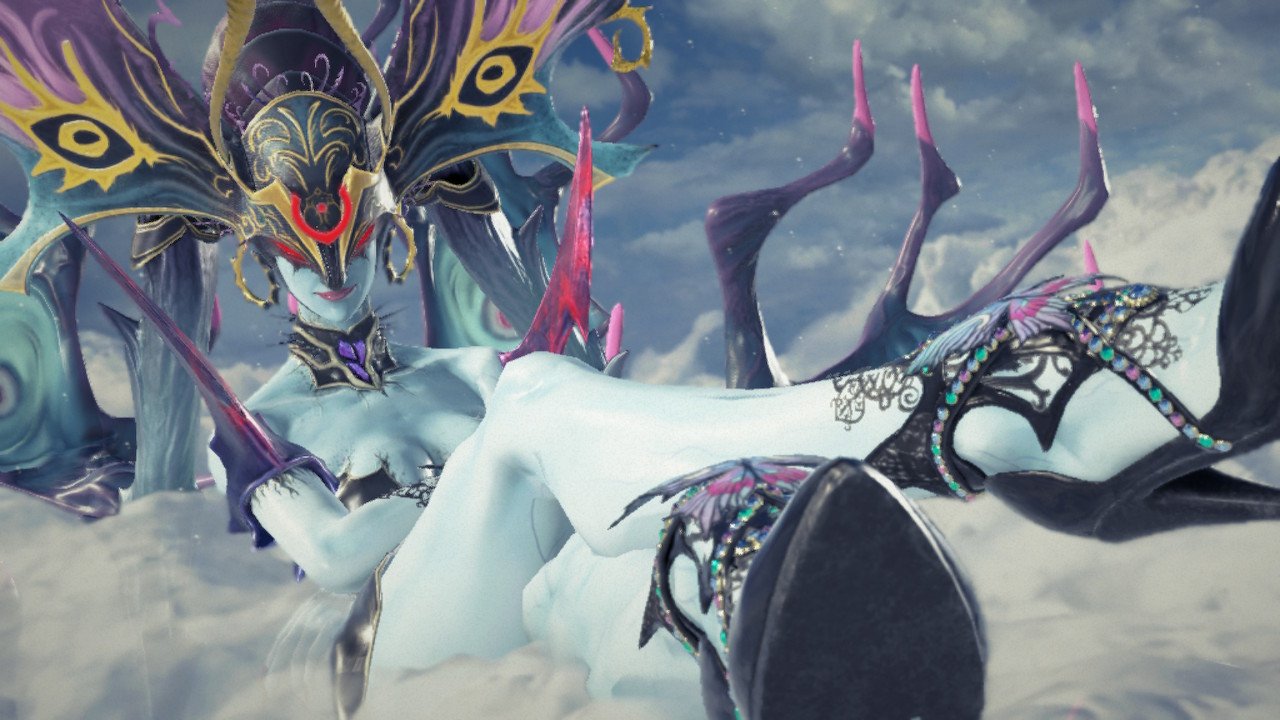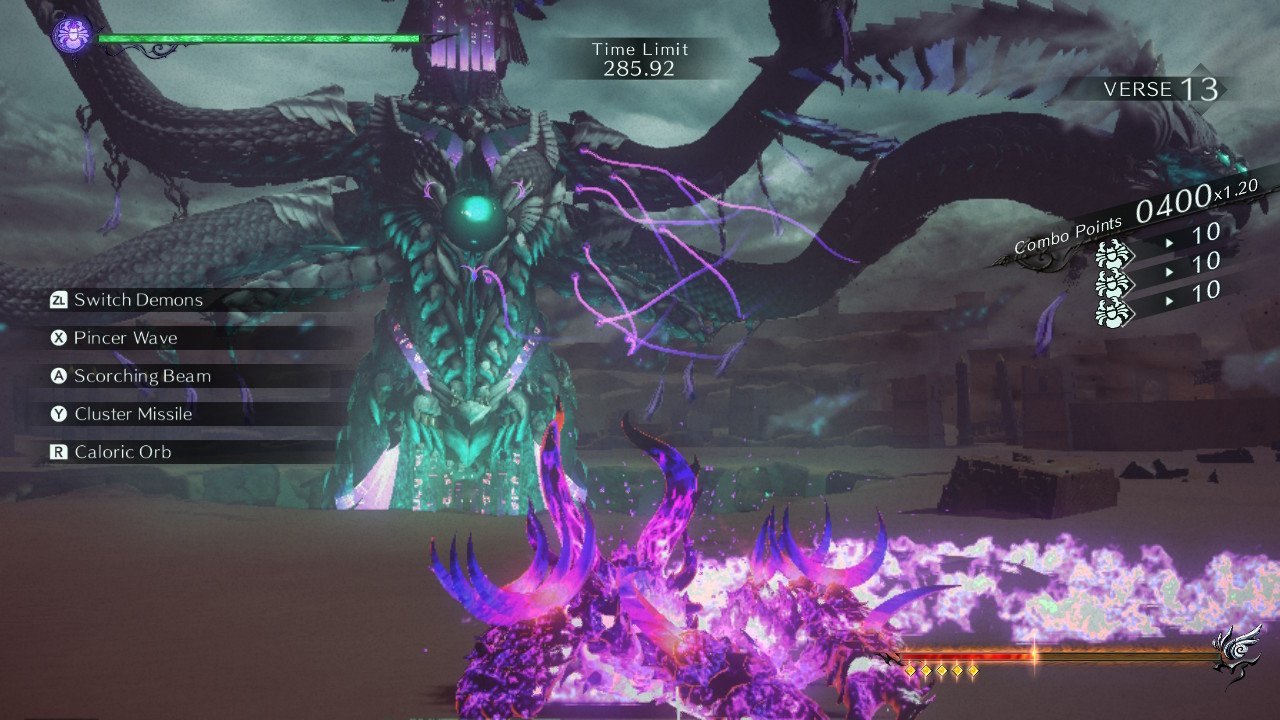Bayonetta 3 Review - Spacetime In A Bottle
/Let it never be said that Platinum Games doesn’t know how to deliver on epic action spectacle. While the Wii U’s flawless Bayonetta 2 refined the winning Devil May Cry-esque action formula of the original title to a T by allowing you to dodge mid-combo without resetting your string, the long-awaited Bayonetta 3 instead goes for broke in the ideas department, ramping up the scale and delivering longer levels with more platforming and puzzle solving, more bosses, and more mayhem. The developers have thrown everything but the kitchen sink at this game, which features the largest amount of playable characters, playstyles, and demons of any title in the series. But can Platinum, who’ve had better times, manage juggling so many balls at once?
Bayonetta 3’s high-energy opening has us taking control of the Umbran Witch as she’s fighting odd bluish creatures called Homunculi who are led by Singularity, a new inter-dimensional threat that seeks nothing less than the destruction of every known universe in order to collapse reality into a single universe that they can control. In a shocking twist, Bayonetta is killed and absorbed into Singularity before our very eyes, but her katana-wielding fighting companion Viola is able to hop into another dimension in a desperate bid to help another version of Bayonetta, presumably the one we’re familiar with, to confront this existential threat.
The multiverse-hopping plot sees Bayonetta surfing on cruise ships through a tsunami, regularly engaging in kaiju boss battles, traveling between continents and time periods, using a frankly ridiculous variety of weapons including energy yo-yos and chainsaw-greatsword-trains, and activating her Demon Slave ability to take command of a multitude of demonic allies as she collects Macguffin artifacts called Chaos Gears from parallel world-lines in order to attempt to save the entire multiverse from collapsing. No pressure.
Demons, deities, deadly dames, and destruction
This time around, Platinum Games borrows a few tricks from their previous Nintendo titles The Wonderful 101 and Astral Chain by allowing you to switch between two of Bayonetta’s many weapon sets and three of her demonic companions on the fly, exponentially increasing your combat and combo options as each of the demons you summon not only has full movesets, but unlockable moves, so you’re pretty much never without options in any given situation. Summoning demons drains Bayonetta’s magic meter, but simply attacking as Bayonetta, waiting, or running around fills it up again. Accessories purchasable from Rodin’s in-game store modify your combat abilities, as you can equip two accessories at a time to enhance rewards or augment your gameplay weaknesses.
In a somewhat controversial decision, the developers don’t rely on Bayonetta to carry the experience alone. Potty-mouthed, pratfalling punk-rocker Viola strives to prove herself to Bayonetta. Her wacky antics and fiery attitude are reminiscent of Dante or Travis Touchdown and provide an entertaining contrast to Bayonetta’s cool and witty demeanor. Viola’s katana-focused gameplay is also stripped-down and provides more of a challenge, as her attacks are slower, her clock-stopping Witch Time ability is tied to a parry rather than a dodge, and she’s forced to rely on just one demon, the rotund, pipe-smoking cat, Cheshire, for help. The kicker is that you don’t control Cheshire directly, so you can double-team opponents with Viola’s slashes as he’s dealing demonic damage.
There are also side-scrolling missions involving Bayonetta’s BFF, Jeanne, who’s tasked with infiltrating a secret base and finding Sigurd, an important scientist who’s key to unlocking the secret behind the Chaos Gears. Her segments feature stealth and action, with a couple of tense boss battles.
Each of the levels has its share of replay value in the form of hidden items and Bewitchments (isolated challenges) that offer key rewards. There are also 14 secret levels called Phenomenal Remnants that can be unlocked by collecting Umbran Tears of Blood. Some of those levels provide awesome rewards, including new weapons and Infernal Demons. I found some of the timed platforming and combat challenges to be a bit frustrating, and there’s such a wealth of content to keep up with that I don’t think I’ll be striving to achieve 100% in this game, but completionists will have plenty to keep them occupied. There are also unlockable costumes based on the versions of Bayonetta from alternate timelines, with custom colors as well.
Platinum’s Reach Exceeds Their Grasp
Bayonetta 3 does suffer a little from its sheer ambition, as the experience can be a tad rough around the edges. Specifically, the camera can become demonically possessed, as it has a life of its own at the worst of times, leading to my head sometimes spinning in the middle of jumping puzzles and moments of heated combat. There’s also a few mechanics that were not clearly explained. In one desert section, Cheshire is supposed to be seeking water to revive a parched Viola. You’re meant to use his tail as a dowsing rod to find a spring for Cheshire to dig up, but as this is never explained, I found myself wandering around, totally stumped, until I looked it up on YouTube only to find the comments filled with people who had the same issue.
There are also frustrating screens in the Jeanne sections that function like roulette wheels, requiring precisely-timed button presses to grab weapons or healing items that can make the difference between life or death, or between a Gold or Pure Platinum ranking. But perhaps the game’s most jarring aspect is the spike in difficulty going from Bayonetta’s levels to Viola’s - it’s especially noticeable on Expert difficulty, which I played on. The humor also doesn’t land as often as it did in previous entries, which I chalk up to Hideki Kamiya being in more of a supervisory role this time around.
There’s also the game’s visuals, which are arguably inferior in polish to those of Bayonetta 2 on the Wii U, although that game’s tight corridors and smaller-scale fights did not push the hardware nearly as much as Bayonetta 3 does on a regular basis. Bayonetta 3 also looks better in motion than it does in screenshots.
Thankfully, these issues are relatively minor, as the main game is fairly easy to navigate for action game aficionados, longer than the other two entries, runs at a steady 30fps, and the sheer variety present in the nearly-nonstop action gameplay more than makes up for the occasional hiccup. There are light-gun-inspired segments, sections that reminded me of some of Star Fox Zero’s best boss battles, a fight straight out of Contra, and plenty of surprises along the way for fans of the franchise and the developers.
A Brilliantly Realized and Executed Action Epic
The amount of time you’ll spend in Bayonetta 3’s universes depends entirely on how much you’re willing to explore, and how good you are at seeking out Umbran Tears of Blood. While it took me around 19 unrushed hours to finish the game on my first playthrough, playtimes will range from 12 hours to over 32. There are plenty of unlockable surprises and additional challenges awaiting players after finishing the main story, and if you have Bayonetta and/or Bayonetta 2 save files on your Switch, you’ll unlock her default weapons from those titles.
Given the scale of the experience, the intensely satisfying gameplay that rewards experimentation, entertaining cut-scenes, excellent music, overall fun factor, and replayability, I’m impressed that Platinum Games has managed to cram so much into Bayonetta 3. Despite a general lack of polish, Bayonetta 3 delivers a breadth of content, provides a worthy conclusion to the epic saga, and leaves me hopeful for the future of the company. If you enjoyed the first two games, I recommend it wholeheartedly, and am now motivated to replay the entire series again to see how Bayonetta 3 stacks up against its more straightforward predecessors.
8/10 (Buy)
Highlights
Pros
Excellent combat system allows for switching weapons and demons, providing a huge variety of options for chaining combos (as Bayonetta)
Entertaining presentation, including a great soundtrack, epic story, and action-packed cut-scenes
Lots of unlockables, collectibles, challenges, and movesets to master
Cons
The camera sometimes has a mind of its own and can get in the way
Jarring difficulty spikes between Bayonetta and Viola segments
Some minor issues such as badly-explained mechanics and a lack of polish in the graphics and during some gameplay segments
What I Played
Beat the game in Expert mode in 19 hours, total playtime including postgame at 23 hours with a standard Switch model
Beat 8/14 Phenomenal Remnants
Unlocked all characters, 8 costumes, 10/12 Infernal Demons, and 14/16 weapons










Assassin’s Creed Shadows greatly blends the classic Assassin’s Creed stealth with the RPG elements of recent entries. Its dynamic world, seasonal changes, and improved stealth mechanics make exploration a joy, but Yasuke’s restrictive gameplay, overall story, and a half-baked notoriety system hold it back.